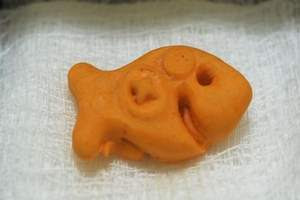A comb is a toothed device used for styling, cleaning and managing hair and scalp. Combs are among the oldest tools found by archaeologists, having been discovered in very refined forms from settlements dating back to 5,000 years ago in Persia. Combs consist of a shaft and teeth that are placed at a perpendicular angle to the shaft.
With that in mind, the Replica Report looks at another comb (so named because of it's Resemblance to the comb tool)- the fleshy growth or crest on the top of the head of gallinaceous birds, most notably turkeys, pheasants, and domestic chickens. Its alternative name cockscomb (spelling variations abound) is because combs are generally larger on males than on females.
Scientists suggest that a chicken's comb has two important functions.
The primary function is to help keep a chicken cool in hot weather, as chickens can't pant like other animals (such as dogs) are able to do. Blood circulates in dense networks of tiny blood vessels and capillaries from the chicken's comb to its wattles. This gives the comb its deep red color and allows the blood to be cooled by the air before traveling to other parts of the bird's body.
The secondary function of the comb is to help a chicken attract a mate. A large, bright-colored comb is a sign of health and vitality. Often, in the pecking order of a flock, the bird with the biggest, brightest comb becomes the "alpha" rooster or hen.
In cookery: Combs are used in cookery, often in combination with wattles or chicken kidneys.
Combs were formerly used in French cuisine as garnishes. They were also used to prepare salpicons served in vol-au-vents, profiteroles, etc. in which they were often combined with other luxury ingredients such as truffles, sweetbreads, or morels in a cream sauce.
In Italian cuisine, combs are an important ingredient in the famous sauce called Cibreo, which also includes chicken livers, wattles, and unlaid eggs. It is used as a sauce for tagliatelle and in the molded potato-ricotta ring Cimabella con cibreo.
Combs are prepared by parboiling and skinning, then cooking in court-bouillon. After preparation, they are greyish.
Rooster combs are often served in Chinese dim sum style dishes.
Source : Wikipedia


















